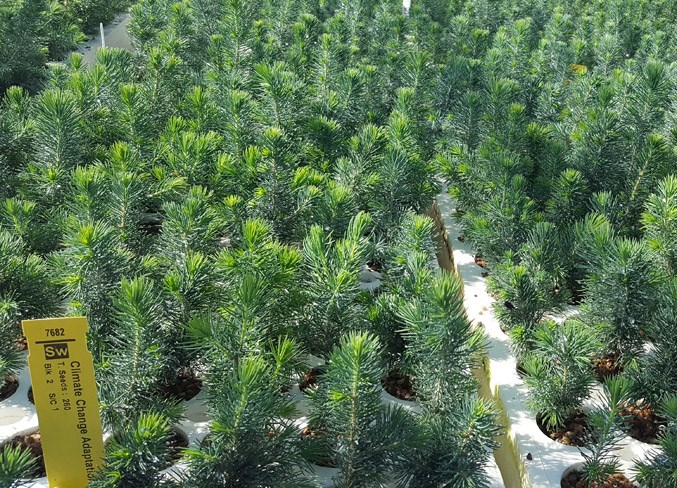An Alberta Agriculture researcher hopes that seeds from St. Albert's White Spruce Forest will help Canadians adapt to climate change.
Alberta Agriculture and Forestry geneticist Deogratias Rweyongeza spoke to the Gazette last week on how seeds collected from St. Albert’s Grey Nuns White Spruce Park were taking part in a new experiment on climate change.
Forestry companies have to replant the trees they cut down, Rweyongeza said. In order to ensure those replacement trees survive, the province has divided Alberta into many different seed zones based on local climate conditions so foresters know what to plant where.
Climate normally shifts over thousands of years, which gives trees time to spread to more favourable places, he explained. Alberta’s seed zone maps likewise assume climate is static.
But it’s not. The Edmonton region has already seen about 1.7 C of warming in the last century, and will likely see up to 3.5 by 2100, resulting in hotter, drier summers and warmer, shorter winters, Climate Resilience Consulting reports. That means trees that thrive here today might wither away tomorrow – a 2016 climate hazard assessment report commissioned by the City of Edmonton predicts that local spruce and aspen forests will become grasslands as a result.
“Plants don’t move. They don’t migrate just because the environment is bad here,” Rweyongeza noted.
Rweyongeza’s team is now organizing an experiment to see if humans can help. By taking trees from one area and replanting them in a place that has a climate more like what they will face in the future, the team hopes to figure out what trees will survive where so they can redraw the seed zone map.
While the province has done similar experiments before, Rweyongeza said those ones focused on trees from the heavily forested north of the province (a.k.a. the Green Area). This new experiment will also look at the mostly deforested south of the province (the White Area), which tends to be tends to be hotter and drier and therefore may contain trees better adapted to Alberta’s hot, dry future.
Rweyongeza said fellow researcher and St. Albert resident Erica Samis told his team that people had already been collecting white spruce seeds from a tree stand in the White Area – St. Albert’s white spruce forest – as part of a conservation effort. Hearing this, Rweyongeza’s team decided to borrow some of those seeds for their study.
The province hopes to collect white spruce seeds from about 300 locations across Alberta, about 60 of which Rweyongeza said he hoped would be in the White Area. (St. Albert is the only White Area site so far.) These trees will be deployed at test sites near High Level, Slave Lake, Brooks, Grande Cache, and Rocky Mountain House. Each site will host about 7,500 seedlings that will grow for about 15 years so researchers can observe their drought tolerance. The team is doing a similar trial for jack and lodgepole pine.
Rweyongeza said his team would likely grow the St. Albert seeds in a greenhouse next spring so they could be planted in 2020. This trial should help foresters determine which areas would be suitable for them to grow in the future and which areas could provide trees better suited for St. Albert’s climate.
Retired St. Albert forestry professor Peter Murphy noted that B.C. was already doing these kinds of “enhanced migration” studies with its trees to figure out how to manage climate change. This was important but difficult research, as so many factors affect a tree’s climate tolerance.
“If climate is changing, we’d want to know how to cope.”




